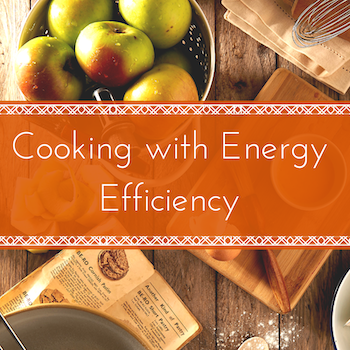
Did you know your Thanksgiving dinner is fairly carbon friendly? While holiday travel and some parts of the cooking process consume a lot of energy, the ingredients in a traditional Thanksgiving feast have a light carbon footprint.
First of all, poultry, a.k.a. your Thanksgiving bird, makes it to your table using eight times less carbon than red meat like beef. In addition, the side dishes—potatoes, cranberries, and, of course, pumpkin—are seasonal vegetables and fruit that keep well and don’t need to be shipped by air. And whether you’re watching football or the Macy’s Day Parade, gathering around the TV for holiday entertainment is a low-carbon leisure activity.
Your travel probably isn’t, especially if you’re flying. Mike Berners-Lee, author of How Bad Are Bananas? The Carbon Footprint of Everything, calculates that you’d have to eat 100 pounds of turkey to match the carbon emitted by one 500-mile flight! This year, consider more eco-friendly ways to get over the river and through the woods, such as taking a train or bus.
Cooking your Thanksgiving feast also takes energy. An electric oven heated at 350 degrees uses about 2 kilowatts per hour (kWh), enough to power an energy-efficient LED lamp for 250 hours. Based on the average cooking time for each dish, your Thanksgiving meal totals about 14 kWh—an estimated 644 million kWh nationwide.
But, never fear! You can do many things to reduce your energy use and environmental impact. Becoming an energy-efficient chef is easier than you think. Whether you’re preparing turkey and potatoes or whipping up other holiday treats, you can save energy with these tips.
 Before you cook:
Before you cook:
- Adjust your thermostat. If you’re cooking a big dinner or having guests over, lower the temperature of your house by a degree or two. This way, the extra heat generated by your oven and guests won’t make your home too toasty.
- Prepare ahead of time. Chop your veggies, tenderize your meat, and measure out your ingredients before heating up your stove or oven. This reduces the amount of time your kitchen appliances are on.
- Thaw your food ahead of time (health experts recommend thawing in your refrigerator. Think ahead and avoid wasting energy by trying to cook frozen food or trying to thaw food under warm water. Thoroughly thawing your food will also reduce the length of cooking time.
While you’re preparing the feast:
- Ceramic or glass plans hold heat better than metal ones, letting you cook dishes at a lower temperature. Using a glass pan could allow you to turn your oven down by as much as 25 degrees, while cooking your meal just as quickly.
- If it’s not too cold outside, cook on the grill, rotisserie style. Turkey cooks faster and you can get the family out for some fresh air.
- Make sure your cookware is clean, has tightly fitting lids, and is the appropriate size for the burner you’re using.
- No dents! Dents decrease your pan’s contact with the heating elements of your stove or oven, which causes the pan to heat up more slowly. A pot with a damaged, warped, or dented bottom can take 50% more energy to warm up.
- Don’t peek! Come on, you know your food isn’t done. Opening the oven allows heat to escape, which means it takes more time and energy to cook your food. Use the oven light to check your cooking progress.
- Cook multiple dishes at the same time to save energy.
Afterwards:
- Let your food cool entirely before you refrigerate it.
- Make sure your dishwasher is fully loaded before you run it. Many dishwashers also have an ‘eco’ setting to conserve energy.
- Enjoy those leftovers. After all, it takes less energy to reheat leftovers than it does to cook multiple meals! Use tightly fitting reusable containers to store leftovers and consider investing in reusable alternatives to plastic wrap or freezer bags.

